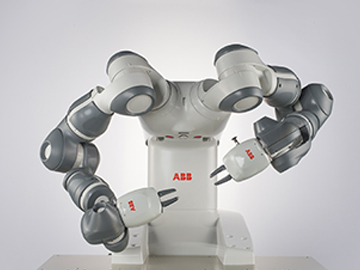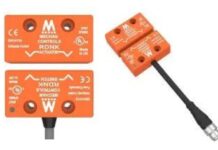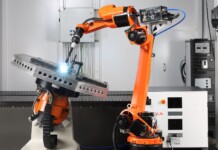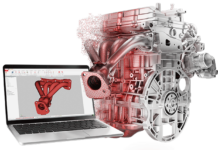Q & A with Phil Crowther, Global Product Manager, Small Robots, ABB Inc.
About Collaborative Robots
Q: The hottest topic in robotics right now seems to be collaborative robots. What industries do you see having the most practical applications for collaborative robots and in which applications might they replace traditional industrial robots?
Small parts assembly is the biggest current market for collaborative robotics. The electronics industry, in particular, has seen demand skyrocket past the supply of skilled labor. As conventional assembly methods diminish in value, manufacturers are finding it strategically and economically imperative to invest in new solutions, like that offered with the newly emerging collaborative robotics technology.

YuMi®, the world’s first truly collaborative robot, is about combining the strengths of both man and machine into an optimal solution. YuMi, in fact, means “you” and “me”, working together to create endless possibilities.
Industrial robots are ideally suited to perform the dull, dirty, delicate and dangerous tasks so often associated with manufacturing. They provide humans the freedom to concentrate on cognitive tasks.
Q: How will these types of smart robots transform manufacturing and assembly in the near future?
The rapid rise of smart electronics has increased the demand for highly skilled production workers capable of consistent precision. This impacts every industry that incorporates small, sensitive parts into its end products.
For manufacturers, the market has changed the rules in ways that can be addressed effectively only by automation. The “new norm” of small parts assembly is higher product volumes, shorter product lifecycles, shorter lead times and a growing trend to customize goods – particularly electronics – close to final markets.
The solution needs to be easily portable and re-deployable as well as able to fit into existing workspaces designed for humans.
Q: With all of the advanced sensing, force-feedback, and machine vision technologies incorporated in industrial and collaborative robots, are there still safety concerns that remain when humans and robots work side-by-side?
Not with the new wave of collaborative robots. Much like a human arm has a skeleton covered with muscles that provide padding; YuMi, for example, has a lightweight yet rigid magnesium skeleton covered with a floating plastic casing wrapped in soft padding. This arrangement absorbs the force of any unexpected impacts to a very high degree. Like the human arm, they have no pinch points so that sensitive ancillary parts cannot be crushed between two opposing surfaces as the axes open and close.
If an unexpected impact occurs, such as a collision with a coworker, YuMi can pause its motion within milliseconds, and the motion can be restarted again as easily as pressing play on a remote control.
Q: Is programming still a large pain point for facilities incorporating robots in their processes?
In order to address programming complexity issues, collaborative robots like ABB’s YuMi employ innovative programming methods, so intuitive to use anyone can do it without special training. It has senses and motor control comparable to humans. One of YuMi’s unique features is its “inherently safe” design, allowing it to work alongside humans while reducing risks to acceptable safety levels.
At first glance, processes on manual assembly lines might seem relatively simple to automate, but in reality it is not so easy to replicate human abilities. Humans have touch and motor control which allows us to handle delicate things with dexterity and precision, as well as judge how much force to use on a given component so that we do not break it. Humans can see where an item is, easily pick it up, and are able to handle an incredibly diverse variety of parts without pausing. Humans also have spatial awareness which allows us to interact closely and in harmony with our coworkers.
In designing collaborative robots, the challenge is to determine how to replicate all of these human attributes in a way that is cost effective, essentially recreating the minimum number of senses and abilities necessary to be at least as safe as humans, yet still able to provide the substantial benefits of automation.
Through purpose-built design that is much more than just the robot, a truly collaborative robot must be an inherently safe system of components that delivers the precision, ease-of-use, speed, flexibility and return-on- investment required for the future of small parts assembly.
Q: How do you address concerns about the cost of robot integration into an existing facility? What advantages does robot integration present that support a customer’s ROI?
While conventional robotic systems will still be needed for a long time to come and have several key advantages over current collaborative technology (e.g. higher payloads, much faster cycle times and stronger protection from harsh environments such as foundries), collaborative robots are far less resource-intensive in terms of system design, installation, commissioning and operation when compared to conventional industrial robots.
As the robotics market continues to exhibit explosive growth, collaborative human-robot workplaces will be a large driver of that growth, thanks to increased ease of deployment and operation, as well as the automation of many industries that were previously considered impossible to automate effectively.
About ABB’s YuMi®
Q: What motivated ABB to develop this robot?
The meteoric rise of smart technologies such as smartphones and wearable technologies (Fitbits, watches, etc.) has led to a demand for automated assembly lines. ABB recognized this need within the small parts assembly arena, early on where the desire for better quality and a rapid ROI are key drivers.
Additionally, customers in this arena wanted an automated solution that was safe and would allow people to concentrate on more cognitive tasks rather than the dull, dirty and dangerous job so often associated with manual assembly.
Q: How is YuMi different from similar robots on the market today?
YuMi is the world’ first truly collaborative robot, able to work side-by-side on the same tasks as humans while still ensuring the safety of those around it.
Capable of handling anything from a watch to a tablet PC and with the level of accuracy that could thread a needle, YuMi will radically change the way we think about assembly automation.
With regards to safety, YuMi’s provides an inherently safe design with light-weight, padded arms, and limited power. This sets it aside from other collaborative robots.
Q: What problems needed to be addressed during the development process?
YuMi’s design is extremely compact and when technology is miniaturized there are often technical issues, or barriers, that must be addressed. Some examples include, but are not limited to, cabling for small radius areas, motors and gears and the encapsulation of controller technologies into the robot body.
Q: How long did it take from conception to ultimate production?
The concept for YuMi was developed nearly a decade ago. ABB only recently decided, based on favorable market conditions, to enter the collaborative robot market. Once the decision was made to productize YuMi, and move forward, the final development was rather fast.
Q: What effect did cost factors have in changing the final design of this product?
When going from a prototype to product the primary design factor to consider is product lifetime. In other words, quality and reliability are the most important things to take into consideration. Product lifetime testing is very stringent at ABB and we set very high goals and milestones before we introduce a new product to the market.
Q: Who is your target audience to be and what benefits will they achieve from using this product?
YuMi is specifically designed to address the needs of Small Parts Assembly, especially in the consumer electronics sector. A key differentiator is that it is part of a total Small Parts Assembly solution that includes adaptable hands, flexible parts feeders, force control sensing, vision guidance, in addition to state-of-the-art control and software.
It can collaborate, side-by-side, with humans in a normal manufacturing environment enabling companies to get the best out of both humans and robots, together.
YuMi meets the demands of a consumer market that is driving a need for greater flexibility in automated manufacturing head-on. For manufacturers, the market has changed the rules in ways that can be addressed effectively only by automation. The “new norm” of Small Parts Assembly is higher product volumes, shorter product lifecycles, shorter lead times and a growing trend to customize goods – particularly electronics – close to final markets.
Q: Do you have any other interesting information you would like to add?
We are extremely keen to talk with customers about their needs and to learn and understand what kinds of applications YuMi is best suited for. In this way, we will continue to find ways to allow people to concentrate on more cognitive tasks rather than the dull, dirty and dangerous job so often associated with manual assembly.
About ABB
ABB is a leader in power and automation technologies that enable utility and industry customers to improve their performance while lowering environmental impact. The ABB Group of companies operates in around 100 countries and employs about 150,000 people.
For more information, visit www.abb.com.
About ABB Robotics
ABB Robotics is a leading supplier of industrial robots – also providing robot software, peripheral equipment, modular manufacturing cells and service for tasks such as welding, handling, assembly, painting and finishing, picking, packing, palletizing and machine tending. Key markets include automotive, plastics, metal fabrication, foundry, electronics, machine tools, pharmaceutical and food and beverage industries. A strong solutions focus helps manufacturers improve productivity, product quality and worker safety. ABB has installed more than 200,000 robots worldwide.
For more information, visit www.abb.com/robotics.


















